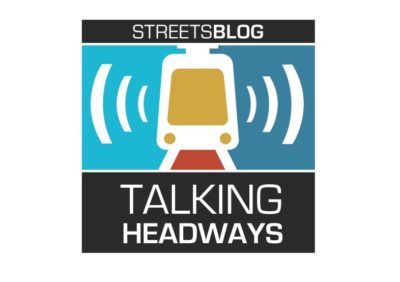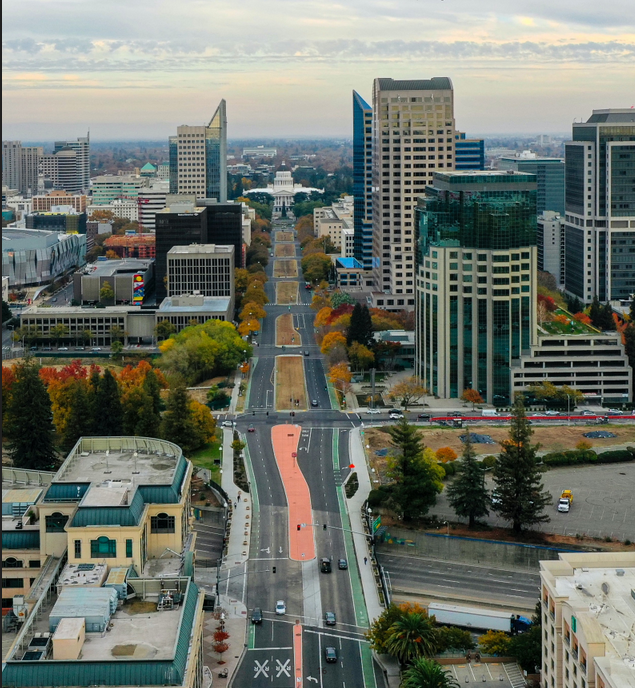This week we’re joined by Robert del Rosario, director of service development for AC Transit in Oakland, Calif. Robert talks about agency coordination during the pandemic, what’s needed to get riders coming back, and what sustainable revenue might look like going forward. We also chat about parklets and bus stop guidelines and have a bit of transit optimism.
For those of you who prefer to read rather than to listen, check out an edited transcript below the audio player. For the unedited full podcast, click here.
Jeff Wood: Now, another question I have is in terms of coordination, you have to coordinate with a number of different agencies, Muni and BART. You have connections to BART stations. I’m curious if that’s harder now because of the reductions in service, because if you have a train that comes every 30 minutes, then you have a bus that comes every 30 minutes when it used to be 15, the connection times are a little bit staggered, even more maybe if you miss one connection or another. Has it been a harder to do those connections and to do that coordination?
Robert del Rosario: Yes, it has been harder, particularly on the shoulders of the service. So on nights and weekends, particularly nights right now at the BART system, ends pretty early. So then, therefore, a lot of people rely on AC Transit services that are out there beyond 9 p.m. to get around. So we are coordinating with BART to make sure that our schedules match. Then when they’re making changes, we're able to make things too.... One of the main positives that we’ve gotten out of the pandemic is that better coordination and communication, not only with BART, but other transit operators. So we are now meeting with BART fairly regularly on what their upcoming service changes are so that we can then respond accordingly and make sure that our services match.
I feel that this is pretty unprecedented from the past — where all of the operators are now talking to each other on a very regular basis. Because what we all want to do is recover correctly and therefore we’re trying to coordinate our schedules, look at hubs and make sure those are all well-coordinated.
Jeff Wood: Why do you think it was harder to coordinate before? Obviously a big event always kind of makes people work together a little bit better. But why do you think it was so hard before?
Robert del Rosario: I think we all get caught up in our day-to-day operations as transit operators, lots and lots of going on. I think all of us had our different challenges — whether it’s over-crowding or safety or how we are going to serve schools or whatever that challenge may be. We all had different challenges. But now with the pandemic, I think we all have the same challenge, and now we’re all coordinated and trying to move forward on addressing that same challenge, which is trying to recover from the pandemic.
Jeff Wood: So coordination also isn’t just between say transit agencies themselves, but the cities too. I’m curious how you all coordinate with say Berkeley or Oakland or any of the other cities in your service area about your service and changes that you make during the pandemic and even afterward.
Robert del Rosario: Yeah. There’s a few things that we do with the local jurisdictions. We have to coordinate with them as they change the function of their streets. And so you can see it in San Francisco and many areas where, during the pandemic, the streets to take on a different role: outdoor dining, better physical distancing. So allowing people to use part of the roadway as a pathway or for seats or a for parklets. So those have impacts on transit, and the cities for the most part have been really good about communicating those to us and trying to figure out ways that transit is an impact, whether it’s finding detours or moving bus stops.
We’ve had a pretty good communication with them during the pandemic. The one thing that we’re trying to really push for as a transit operator is there’s all these rightful accommodations being made for pedestrians, cyclists, diners, but what can be done in sort of that quick build tactical urbanism frame for transit, and are there ways that during this pandemic that we come out of a recovery with transit operations being smoother or better on any of these corridors? And so can we put in a dedicated transit lanes, red carpet lanes on some corridor or is now when nevi the impact, won’t be so challenging. Plus you have State Bill 288, which allows for CEQA exemptions temporarily for transit projects.
If we can take advantage of that, then we can have hopefully a quicker process to try to install and implement transit priority projects, but that does require a partnership with local jurisdictions. Many of them have been very interested in trying to work with us on that.






